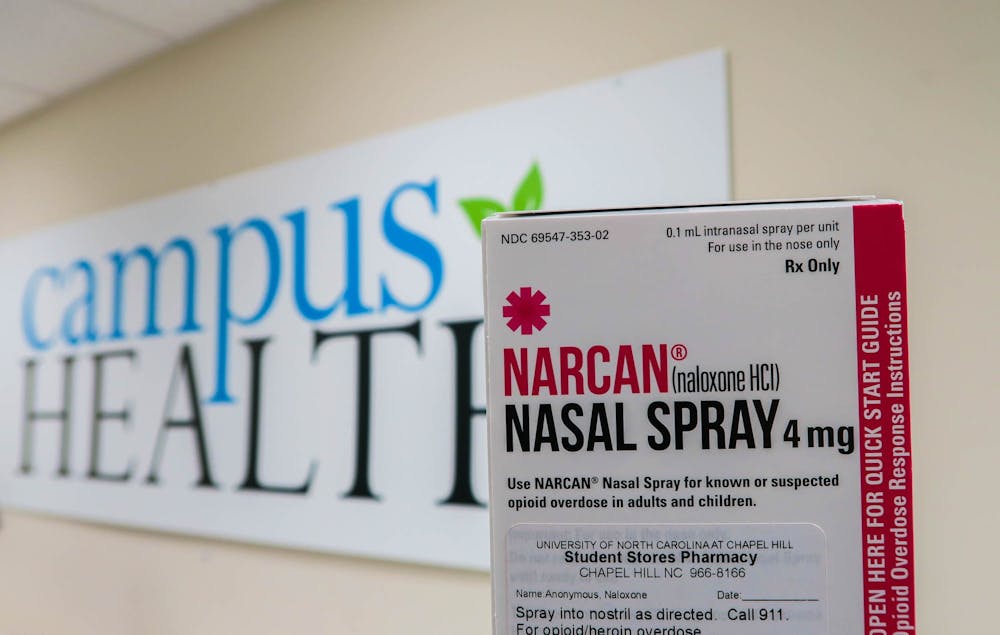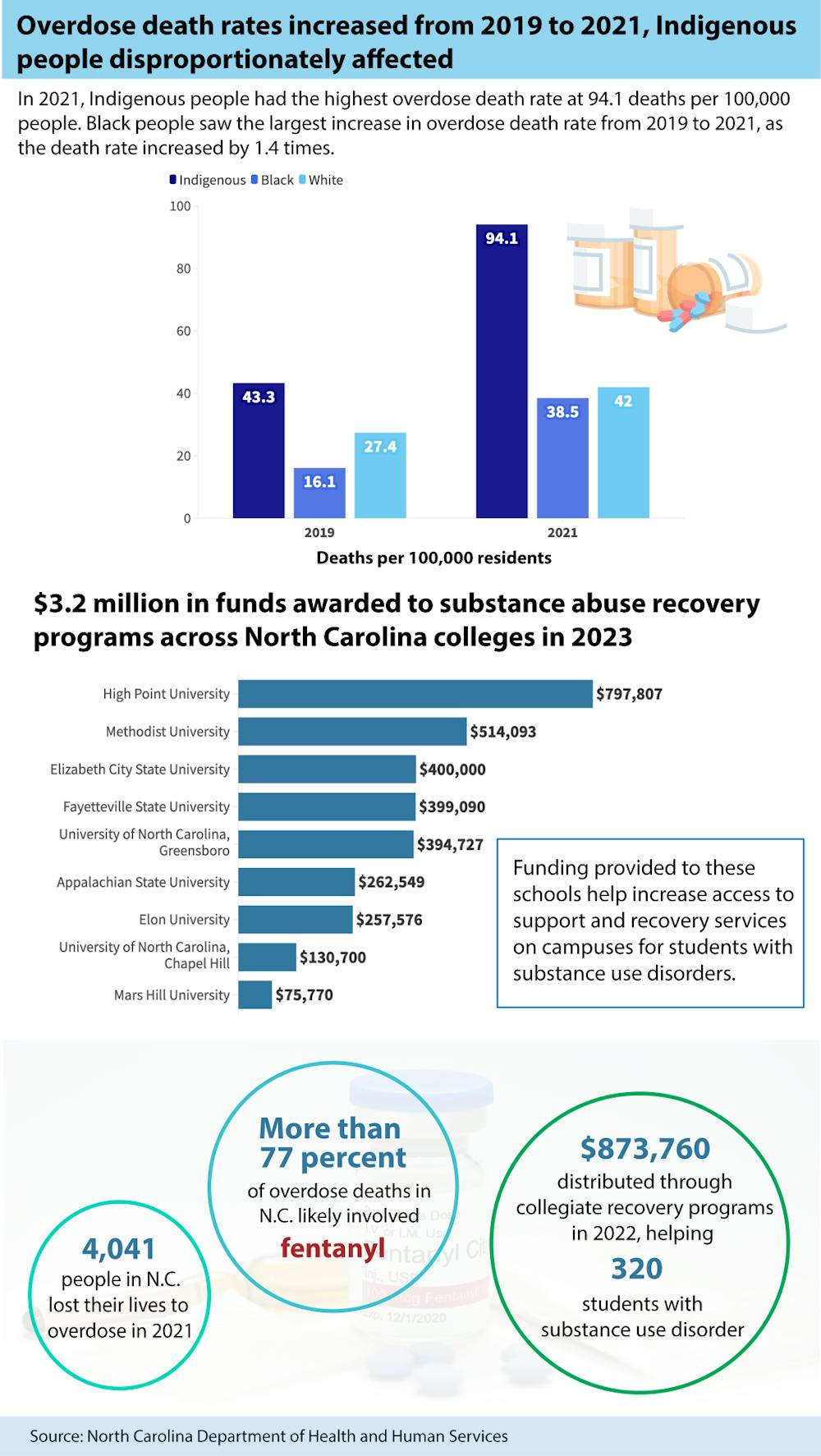Delesha Carpenter lost two friends to drug overdoses within the span of two weeks. That experience seven years ago transitioned her research focus from asthma to reducing opioid overdoses.
Decades into the opioid epidemic, experts like Carpenter are concerned about the increased prevalence of fentanyl-laced products.
Fentanyl is an extremely potent opioid drug, with quantities as small as 2 milligrams being lethal depending on a person’s size and tolerance. Although the drug is not usually used by itself, fentanyl can be mixed with other controlled substances such as cocaine, increasing the chance of an overdose.
Carpenter, an associate professor at the Eshelman School of Pharmacy, is using funding from the National Institutes of Health to create maps detailing Naloxone availability across North Carolina.
Naloxone, also called Narcan, is a drug that can revert the effects of an opioid overdose. In late March, the medication was approved for over-the-counter use by the U.S. Food and Drug Administration. Carpenter said she hopes her data can look into statewide racial and geographic disparities related to opioid deaths.
She said pharmacists are one of the most accessible health professionals in the country and that individuals can stop by with any questions at any time.
“Making sure that pharmacists are equipped to provide tools like Naloxone and fentanyl test strips — that's what I work on: to train pharmacists to be prepared offering these services especially in rural areas," Carpenter said.
Her work is in line with her belief in harm reduction, a set of strategies designed to help drug users engage in less risky drug behaviors.
Skylar Harrigfeld, co-director of the UNC's Student Pharmacists Opioid Misuse Prevention (StOMP) Task Force, said harm reduction is an important practice for those using opioids. She said the StOMP Task Force has been working closely with the North Carolina Harm Reduction Coalition to make free Naloxone kits distributed to other drug users.




